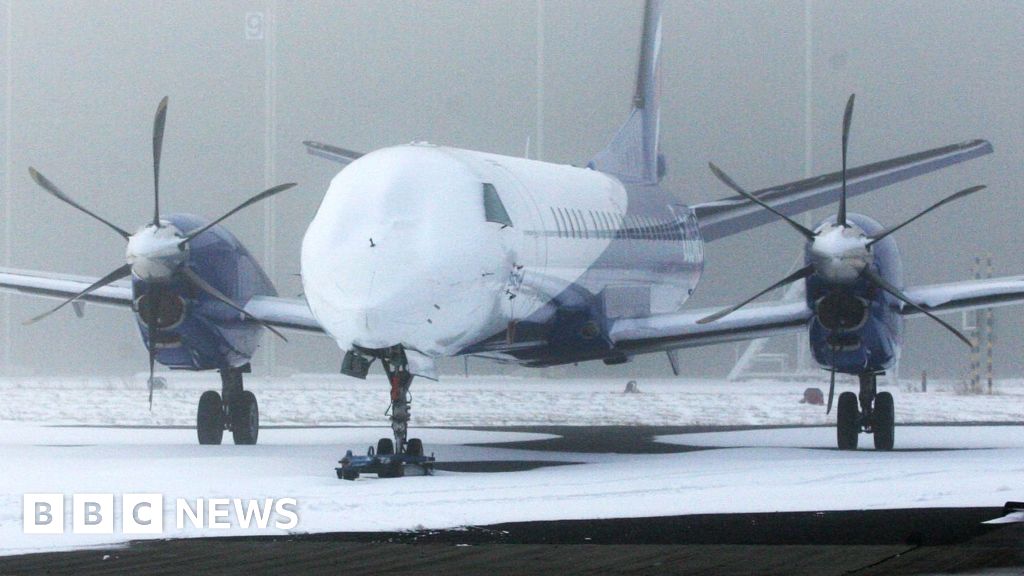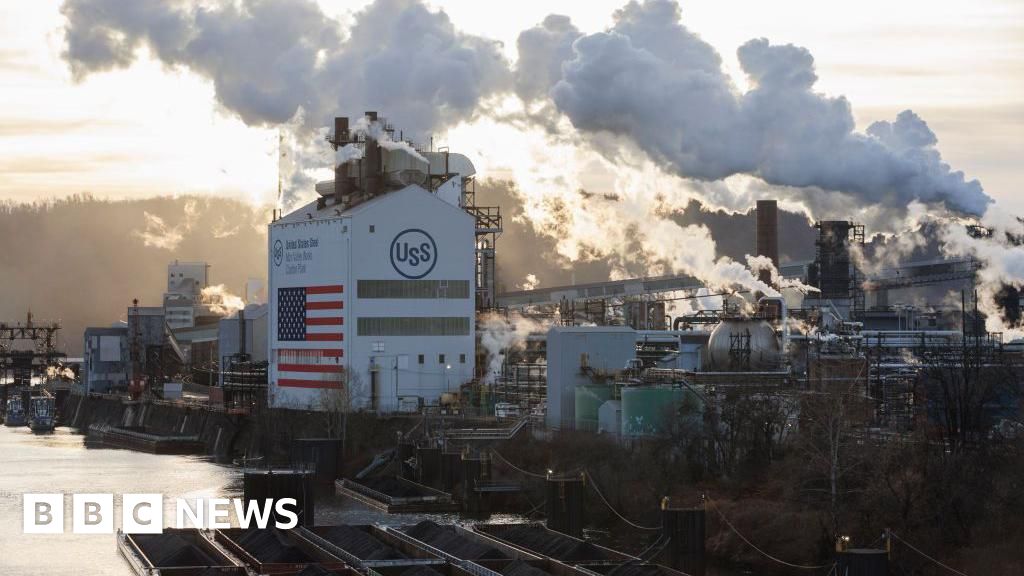On Thursday morning, North Korea launched an Intercontinental Ballistic Missile (ICBM) towards the Sea of Japan, also known as the East Sea, in what analysts say was the longest flight time yet for any North Korean missile.
The missile flew for 86 minutes and approximately 1,000km (621 miles) at a maximum altitude of 7,000km (4,350 miles) before it splashed down off the coast of Hokkaido, outside Japan’s exclusive economic zone, according to Japan’s Defense Agency.
North Korean state media confirmed that an ICBM was launched to inform “rivals” of the country’s powerful capabilities, while Japan’s Defense Minister Gen Nakatani said the test could possibly mark a “new” kind of ICBM missile.
Here’s what we know about North Korea’s ICBM programme:
Why did North Korea test-fire an ICBM?
Test launching long-range missiles is an important part of North Korea’s military development process as leader Kim Jong Un acquires a vast arsenal of missiles and nuclear weapons that analysts say are capable of one day reaching targets as far as Japan and the US.
Test-firing ICBMs helps the North refine its weapons systems. It is also one way North Korea grabs the world’s attention during key events, Shin Seung-ki, head of research on North Korea’s military at the state-run Korea Institute for Defense Analyses in Seoul, told the Reuters news agency.
Shin said the ICBM test launch may have been intended to show that North Korea “will not bow to pressure” as Pyongyang has recently come under pressure over the reported deployment of an estimated 10,000 North Korean soldiers to assist Russia in Ukraine.
The test sends a message that North Korea will “respond to strength with strength”, Shin said, and may also “seek some influence on the US presidential election”.
Ankit Panda, a North Korea expert and senior analyst at the Carnegie Endowment for International Peace, told Al Jazeera that North Korea’s leader Kim Jong Un may have several reasons to test-launch an ICBM at this time.
“This test contributes to Kim Jong Un’s goals of improving the credibility of his nuclear deterrent. He just visited an ICBM base and called for progress, so this test should be seen primarily through those lenses,” Panda told Al Jazeera.
“Analysts will be tempted to read this in the context of the upcoming US election, but I wouldn’t be so hasty,” Panda said.
Kim Jong Un remains focused on his “nuclear modernisation and the timing of this test should not be over-interpreted in terms of external dynamics,” he added.
What kind of ICBM is being tested?
Pyongyang last test-fired an ICBM in December 2023 with the launch of its powerful Hwasong-18 missile, marking the third time North Korea tested the weapon.
The Hwasong-18 flew a reported 1,000 km (621 miles) for 73 minutes at an altitude of more than 6,000 km (3,728 miles), according to 38 North, a programme at the Stimson Center think tank in Washington, DC that monitors North Korea.
ICBMs are designed to fly long distances and carry weapons such as nuclear warheads.
The December missile was launched at a “lofted” trajectory – the same as Thursday’s test.
 North Korean leader Kim Jong Un, centre, walks in front of an intercontinental ballistic missile in March, 2022 [File: Korean Central News Agency via Reuters]
North Korean leader Kim Jong Un, centre, walks in front of an intercontinental ballistic missile in March, 2022 [File: Korean Central News Agency via Reuters]
“Lofted trajectory” means firing a missile almost vertically. This allows it to travel to a very high altitude but then land a short horizontal distance from the launch site.
Lofted launches are said to enable Pyongyang to gather data sent back from test missiles to better understand the challenges faced when a long-range warhead re-enters the Earth’s atmosphere at extremely high speed and generates tremendous amounts of heat.
Analysts say the Hwasong-18 could potentially fly as far as 15,000 km (9,320 miles) when fired in a non-lofted trajectory.
The Hwasong-18 also marked a departure from past ICBM models – such as the Hwasong-17 – because it was a solid-state fuel missile, which is safer and easier to manoeuvre than liquid-propelled missiles.
Solid-fuel missiles do not need to be fuelled immediately before launch and are often easier and safer to operate. They require less logistical support, which makes them harder to detect and more survivable than liquid-fuel weapons.
Solid fuel is dense and burns quite quickly, generating thrust over a short time, and it can remain in storage for an extended period without degrading or breaking down – a common issue with liquid fuel.
 North Korean leader Kim Jong Un, left, with his daughter watching the test launch of a Hwasong-18 intercontinental ballistic missile (ICBM) at an undisclosed location in North Korea in December, 2023 [KCNA via AFP]
North Korean leader Kim Jong Un, left, with his daughter watching the test launch of a Hwasong-18 intercontinental ballistic missile (ICBM) at an undisclosed location in North Korea in December, 2023 [KCNA via AFP]
Liquid propellants provide greater propulsive thrust and power, but require more complex technology and have extra weight.
The 38 North programme said leader Kim Jong Un wants to develop a variety of ICBMs with varying tactical advantages such as mobility, range, and payload capability.
That includes the Hwasong-17, dubbed the “Monster Missile”, which was first tested in 2022. It is less mobile but capable of carrying a larger payload like “multi-warhead rockets” and “super-large hydrogen bombs,” according to 38 North.
The Hwasong-15, first tested in 2017, is reportedly smaller but more mobile.
Why does North Korea want so many weapons?
North Korea views its weapons cache as a way of maintaining its national security since its government was established in 1948 with the help of the Soviet Union.
Following the end of the Korean War in 1953, Seoul and Pyongyang signed an armistice agreement, but they never signed an official peace treaty and Pyongyang sees the US’s close military relations with South Korea as an existential threat.
In the decades since the armistice that ended the war, North Korea has become increasingly isolated under the leadership of the Kim family – first Kim Il Sung, then his son Kim Jong Il, and finally his grandson, Kim Jong Un.
North Korea has been developing its nuclear programme since the 1980s, which is seen as a way to both deter an attack by a more powerful foe, such as the US, while also helping the Kim family maintain their iron hold over the country.
While the collapse of the Soviet Union was a disaster for North Korea, it has renewed its ties with Russia recently.
What are North Korea’s other weapons?
North Korea has carried out a variety of missile launches and nuclear tests since 1984, including short- and intermediate-range missiles, low-flying cruise missiles, and submarine-launched missiles, according to the CSIS Missile Defence Project.
North Korea also has an arsenal of at least dozens of nuclear warheads, but it likely has the materials to build many more. Its last nuclear test was carried out in 2017, and is reportedly 10 times more powerful than the bombs dropped on Japan at the end of World War II.
Some of its known missiles include Scud-based missiles, which are based on Soviet-era technology, and the medium-range No-Dong ballistic missiles, which have been in service since the 1990s, according to CSIS.
More recently, it has test-fired the short-range KN-23 and KN-25 ballistic missiles, but it is still unknown whether they are fully operational.
 North Korean leader Kim Jong Un stands on the conning tower of a submarine during his inspection of the Korean People’s Army Naval Unit 167 in this undated photo released by North Korea’s Korean Central News Agency (KCNA) in Pyongyang in 2014 [KCNA via Reuters]
North Korean leader Kim Jong Un stands on the conning tower of a submarine during his inspection of the Korean People’s Army Naval Unit 167 in this undated photo released by North Korea’s Korean Central News Agency (KCNA) in Pyongyang in 2014 [KCNA via Reuters]

 Movie
Movie 2 months ago
63
2 months ago
63 





![Presidents Day Weekend Car Sales [2021 Edition] Presidents Day Weekend Car Sales [2021 Edition]](https://www.findthebestcarprice.com/wp-content/uploads/Presidents-Day-Weekend-car-sales.jpg)



 English (United States)
English (United States)